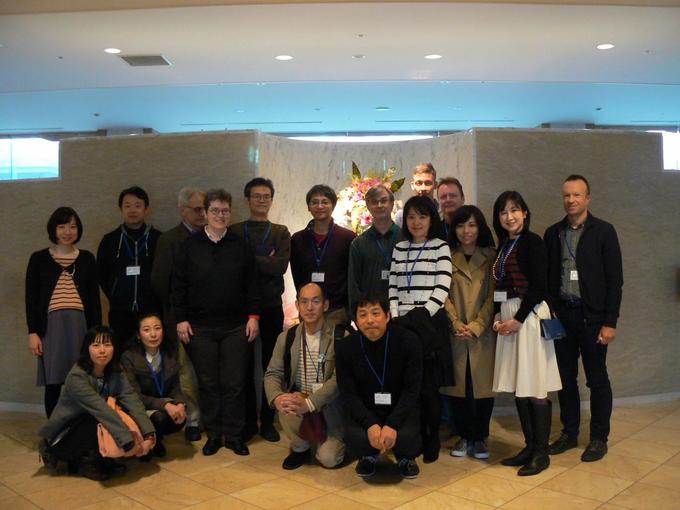NO.067 Instruction and instructed action: Embodied reciprocity in interaction
March 19 - 21, 2015 (Check-in: March 18, 2015 )
Organizers
- Lorenza Mondada
- Basel University, Switzerland
- Mayumi Bono
- National Institute of Informatics, Japan
- Aug Nishizaka
- Chiba University, Japan

Overview
Description of the meeting
The goal of this workshop is to discuss embodied reciprocity in interaction with a special reference to instruction and instructed action. Instructions can be found everywhere, from ordinary life to the workplace, and are a frequent type of action through which one person shows, demonstrates, but also requests to another to do something, which is realized in instructed action. Although instructions have been widely studied in linguistics and pragmatics, we contextualize them in the tradition of ethnomethodology and conversation analysis. Instead of treating instruction as a unidirectional speech act that determines instructed action, we consider instruction and instructed action as paired actions that are mutually dependent, and that are interactionally achieved (e.g. Garfinkel, 1967). In order for instruction to complete, recipients interpret and produce embodied practical actions (Suchman, 1987). This mutual dependency, or reflexivity between instruction and instructed action, is one of the important themes in this workshop.
Instruction has been largely studied in educational settings including classrooms (Macbeth, 2011), crochet Lessons (Lindwall & Ekstöm, 2012), trainings in surgery (Koschmann et al., 2011; Sanchez Svensson et al, 2009), and driving lessons (De Stefani & Gazin, forthcoming). While institutional contexts are a useful place to examine how instruction is sequentially constructed and how it is supported by those who provide and receive an instruction, such as a teacher and a student, (for the IRF/IRE sequence, see Sinclair & Coulthard, 1975; Mehan, 1979), we expand the scope of analysis and consider the fact that instruction is prevalent in a wider range of social situations including ordinary interactions between families and friends, workplace, and technologically mediated environments. Specifically focusing on Conversation Analysis, Ethnomethodology and closely related approaches, our aim is to examine the situated and embodied nature of instructions. In a surgical operation room, for example, the surgeon’s directives instruct his or her assistant’s embodied action, such as handing in an appropriate instrument to the surgeon. Although instructions are highly indexical, they are understood within the praxeological context of the ongoing procedure, in which responsive instructed action reflexively provide for the intelligible character of minimal instructions (Mondada 2014). In a robot/android theater, the director’s instruction of timing a 1-second pause is accomplished in the course of interactions made in multiple rehearsal sessions. Instead of using a watch, actors appropriately arrange and “craft” their bodies in order to perform the pause. (Bono, in preparation). These studies suggest that instruction and instructed action are not simply correlated, but mutually dependent, locally organized actions involving various semiotic resources such as language and the body as well as material objects such as tools and computers. In addition, structural properties of the environment play an important role in achieving instruction. Nishizaka (2006) examines interactions in violin lessons and discusses how the instruction of correctly performing quarter notes is collaboratively achieved. When the child who learns to play the violin and her mother as a piano accompanist perform in front of the teacher, they not only produce musical sounds, but also structure and restructure their interactional environment. The understanding of the instruction is intricately displayed and demonstrated in the courses of interaction.
Studies of instruction and instructed action in various naturally occurring interactions contribute to the field of engineering and informatics in important ways. Instructions characterize much use, problem solving, repairing, and learning of technological tools ? as observable in helplines for users having problems with their computers, instructions about how to handle photocopy machines (Suchman,1986), or about how to implement a new software. While the development of technologies such as sensory detecting and machine learning enables engineers to modelize and simulate patterns of human behaviors and actions, it is still not possible to automatically detect and analyze the aforementioned reciprocity that is typically negotiated in interaction and constructed without words. The aim of this workshop is to provide engineers with insights into how to systematically observe such reciprocity and find ways to apply to the fields of computer science.
